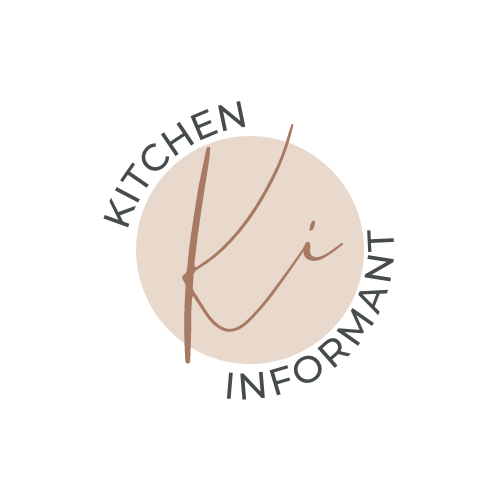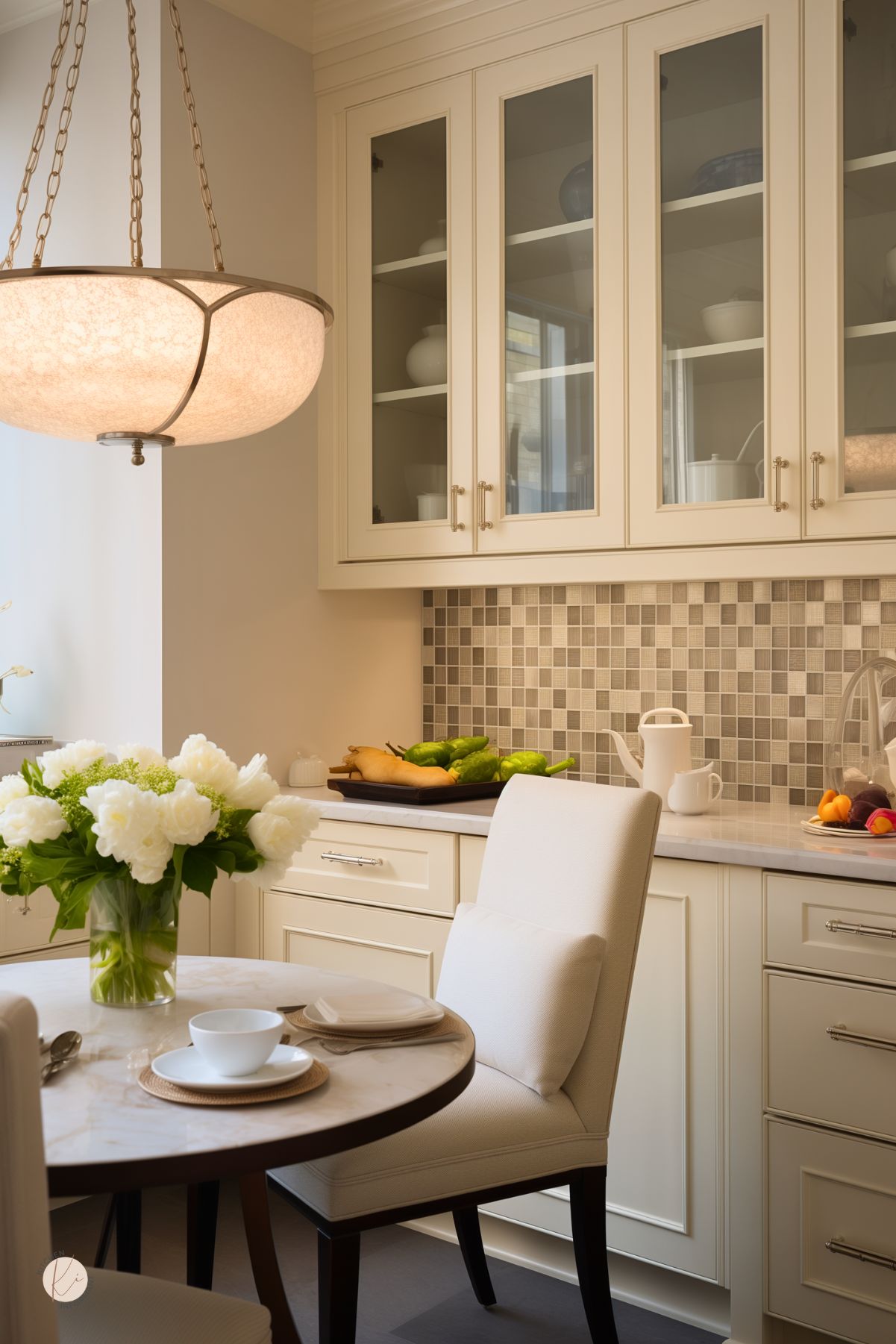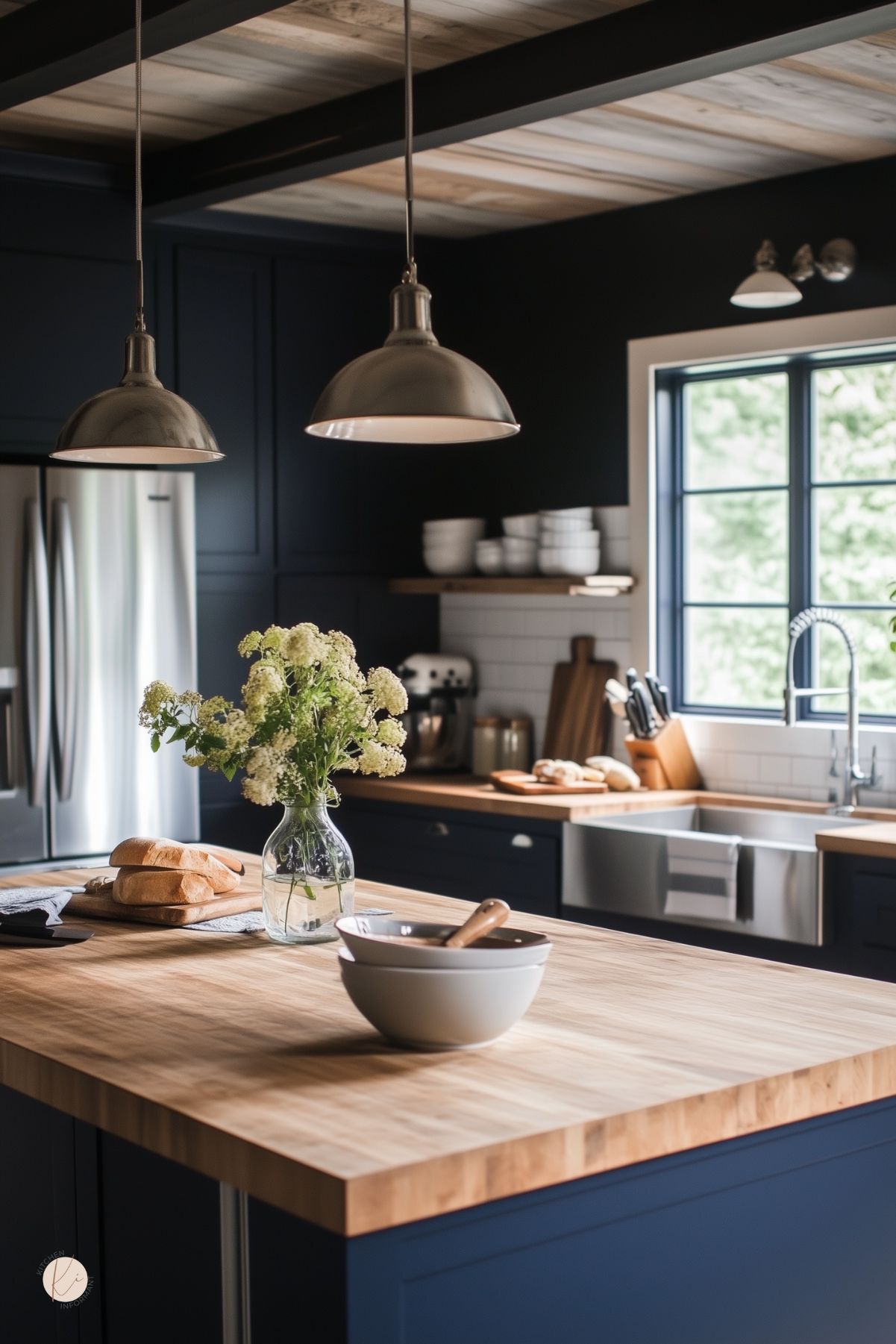The Different Types of Baking Pans and Their Uses: A Comprehensive Guide
Baking is a science that requires precision and the right tools to achieve the perfect result. One of the most important tools in a baker’s arsenal is the baking pan.
There are different types of baking pans available in the market, each with its unique characteristics and uses.
Choosing the right baking pan can make a significant difference in the outcome of your baked goods.

The different types of baking pans include round pans, square pans, rectangular pans, loaf pans, muffin pans, and springform pans.
Each pan is designed to serve a specific purpose and produce a particular type of baked good.
For example, round pans are perfect for baking cakes, while muffin pans are ideal for making muffins and cupcakes.
Loaf pans are used for baking bread, and springform pans are commonly used for cheesecakes and other delicate desserts.
Key Takeaways
- Choosing the right baking pan is crucial for achieving the perfect result.
- Different types of baking pans serve different purposes and produce different types of baked goods.
- Proper use and maintenance of baking pans can impact the outcome of your baked goods.
Types of Baking Pans
When it comes to baking, choosing the right type of pan is crucial to achieving the desired results.
Here are some of the most common types of baking pans and their uses.
Round Cake Pans
Round cake pans are the most commonly used pans for baking cakes. They come in various sizes and are typically made of aluminum or steel.
These pans are perfect for making layer cakes, as they produce evenly baked, tender cake layers.
Square and Rectangular Baking Pans
Square and rectangular baking pans are versatile and can be used for a variety of baked goods, from brownies and bars to casseroles and lasagnas.
These pans are typically made of aluminum or steel and come in various sizes.
Loaf Pans
Loaf pans are used for baking bread and pound cakes. They are typically made of aluminum or steel and come in various sizes. Loaf pans produce a tall, rectangular loaf with a slightly curved top.
Bundt Pans
Bundt pans are used for making bundt cakes, which are characterized by their unique ring shape. These pans are typically made of cast aluminum and come in various sizes and shapes.
Bundt pans produce a cake with a crispy crust and a moist, tender interior.
Springform Pans
Springform pans are used for making cheesecakes and other delicate baked goods. These pans have a removable bottom and a latch on the side that allows the pan to be easily released.
Springform pans are typically made of aluminum or steel and come in various sizes.
Muffin Pans
Muffin pans are used for baking muffins and cupcakes. These pans are typically made of aluminum or steel and come in various sizes.
Muffin pans produce individual portions of baked goods with a slightly domed top.
Sheet Cake Pans
Sheet cake pans are used for making sheet cakes and bar cookies. These pans are typically made of aluminum or steel and come in various sizes.
Sheet cake pans produce a thin, flat cake or cookie that can be easily cut into squares or rectangles.
Specialty Pans
Specialty pans are used for making unique baked goods, such as shaped cakes, tarts, and pies. These pans come in various shapes and sizes and are typically made of aluminum or steel.
Specialty pans produce baked goods with a distinctive shape and appearance.
Choosing the right type of pan is essential to achieving the desired results when baking. By understanding the different types of baking pans and their uses, bakers can create delicious baked goods with ease and confidence.

Material Considerations
When it comes to baking pans, the materials used to make them can greatly affect the quality of your baked goods.
Here are some of the most common materials used for baking pans and their properties.
Aluminum Pans
Aluminum pans are popular for their excellent heat conductivity, which allows for even baking. They are also lightweight and affordable.
However, they are prone to warping and can react with acidic ingredients, which can affect the taste of your baked goods.
To prevent warping, it is recommended to hand wash aluminum pans and avoid using metal utensils on them.
Stainless Steel Pans
Stainless steel pans are durable and non-reactive, making them ideal for baking with acidic ingredients. They are also dishwasher safe and easy to clean.
However, they are not great at conducting heat, which can result in uneven baking.
To prevent sticking, it is recommended to grease stainless steel pans before use.
Glass Pans
Glass pans are great for baking dishes that require slow, even cooking, such as casseroles and lasagnas. They are also non-reactive and dishwasher safe.
However, they are not great at conducting heat, which can result in uneven baking.
Glass pans are also prone to shattering if exposed to sudden temperature changes, so it is important to let them cool down before washing them or placing them in the fridge.
Silicone Pans
Silicone pans are flexible and non-stick, making them great for baking delicate items such as cupcakes and muffins. They are also dishwasher safe and easy to clean.
However, they are not great at conducting heat, which can result in uneven baking.
Silicone pans are also not recommended for baking dishes that require a crispy crust, such as bread and pizza.
Non-Stick Pans
Non-stick pans are coated with a layer of Teflon or other non-stick material, which makes them great for baking items that tend to stick, such as cakes and cookies. They are also easy to clean and dishwasher safe.
However, non-stick pans can scratch easily, which can lead to the release of harmful chemicals.
It is recommended to use non-stick pans only with plastic or wooden utensils and to avoid using metal scrubbers on them.
Choosing the Right Baking Pan
When it comes to baking, choosing the right baking pan is crucial to achieving the perfect result.
Here are some factors to consider when selecting a baking pan:
Size and Volume
The size and volume of the baking pan can affect the outcome of the baked goods. A pan that is too small can cause the batter to overflow, while a pan that is too large can result in a flat and dry cake.
It is important to choose a pan that matches the recipe’s instructions for size and volume.
Shape and Depth
Different baked goods require different shapes and depths of pans. For example, a round pan is best for making cakes, while a loaf pan is ideal for making bread.
The depth of the pan can also affect the baking time and texture of the baked goods. A shallow pan is best for crispy cookies, while a deeper pan is ideal for moist and dense cakes.
Heat Conductivity
The material of the baking pan can affect the heat conductivity and distribution, which can impact the texture and color of the baked goods.
For instance, metal pans conduct heat well and result in a crispy crust, while glass pans retain heat and produce a softer crust.
Silicone pans do not conduct heat as well as metal, but they are flexible and easy to clean.
Reactivity with Ingredients
Certain materials can react with acidic ingredients, such as tomatoes and citrus fruits, and cause a metallic taste in the baked goods.
Aluminum and copper pans are reactive and should not be used with acidic ingredients.
Non-reactive materials, such as stainless steel and ceramic, are safe to use with any ingredient.
By considering these factors, bakers can choose the right baking pan for their recipe and achieve the perfect result every time.

Proper Use and Maintenance
Preparation Before Baking
Before using any baking pan, it is essential to prepare it properly. For non-stick pans, it is recommended to grease them with butter, shortening, or cooking spray.
However, for pans with a natural finish, it is recommended to grease them with oil or butter and then dust them with flour or cornmeal.
It is also essential to preheat the oven before baking.
The temperature should be set according to the recipe’s instructions, and the oven should be allowed to preheat for at least 10 minutes before putting the baking pan inside.
Temperature and Baking Time Adjustments
Different types of baking pans require different baking times and temperatures. For example, dark-colored pans tend to absorb more heat than light-colored pans, so they require lower temperatures and shorter baking times.
On the other hand, glass pans retain heat for longer periods, so they require lower temperatures but longer baking times.
It is recommended to follow the recipe’s instructions for baking time and temperature.
However, if using a different type of baking pan than what the recipe calls for, it is essential to adjust the temperature and baking time accordingly.
Cleaning and Storage
Proper cleaning and storage of baking pans are essential to ensure their longevity. After use, baking pans should be allowed to cool before cleaning.
Using a non-abrasive sponge or cloth, the pan should be washed with warm, soapy water. Harsh detergents and scrubbers should be avoided as they can damage the pan’s finish.
It is also essential to dry the baking pan thoroughly before storing it. Moisture can cause rust and damage the pan’s finish.
Baking pans should be stored in a cool, dry place, away from direct sunlight and heat sources. It is recommended to stack pans of the same size to save storage space.
In summary, proper preparation, temperature, and baking time adjustments, cleaning, and storage are essential for the effective use and maintenance of baking pans.
By following these guidelines, baking enthusiasts can ensure their baking pans’ longevity and produce delicious baked goods consistently.
Impact on Baking Results
Different types of baking pans can have a significant impact on the texture, browning, and even cooking of baked goods.
Here are some of the key factors to consider when choosing the right baking pan for your recipe.
Texture and Browning
The type of baking pan you use can affect the texture and browning of your baked goods.
For example, dark-colored pans absorb more heat and can result in darker and crispier crusts, while light-colored pans reflect more heat and can result in lighter and softer crusts.
Similarly, the material of the pan can also affect the texture and browning.
Aluminum pans are good conductors of heat and can result in evenly browned and crispy crusts, while glass pans retain heat and can result in softer and more moist crusts.
Even Cooking
The shape and size of the baking pan can also impact the even cooking of your baked goods. For example, a deep and narrow pan can result in uneven cooking, while a shallow and wide pan can result in more even cooking.
Also, the thickness of the pan can also impact even cooking. Thicker pans can retain more heat and result in more even cooking, while thinner pans can result in uneven cooking and hot spots.
Release Properties
The release properties of a baking pan refer to its ability to release baked goods without sticking. Non-stick pans are designed to release baked goods easily, while traditional pans may require greasing or flouring to prevent sticking.
It’s important to note that non-stick pans can wear out over time and may require replacement.
Additionally, some non-stick coatings may not be safe at high temperatures, so it’s important to follow the manufacturer’s instructions and avoid using metal utensils that can scratch the coating.
Frequently Asked Questions

What are the essential baking pans every baker should own?
The essential baking pans every baker should own are loaf pans, round cake pans, muffin pans, and sheet pans. Loaf pans are perfect for baking bread and pound cake. Round cake pans are versatile and can be used to bake cakes, pies, and quiches. Muffin pans are great for cupcakes and muffins, but can also be used to bake individual quiches and tarts. Sheet pans are perfect for baking cookies, sheet cakes, and roasting vegetables.
How do different materials like silicone and aluminum affect baking results?
Different materials like silicone and aluminum can affect baking results in different ways. Aluminum is an excellent heat conductor, making it ideal for baking cakes and cookies. It distributes heat evenly, resulting in consistent baking results. Silicone is non-stick and flexible, making it ideal for baking delicate pastries and cakes. However, silicone does not conduct heat as well as aluminum, resulting in longer baking times and uneven browning.
It is important to note that the type of material used for baking pans should be chosen based on the type of baked goods being prepared. For example, silicone pans are great for baking delicate pastries and cakes, while aluminum pans are great for baking cookies and cakes.





